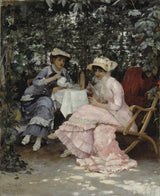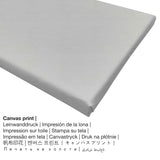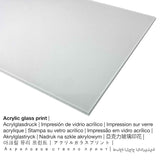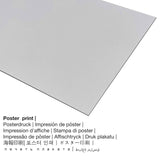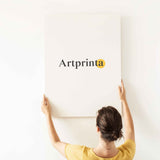Hugo Birger, 1880 - Ịnọdụ n'okpuru Arbor - mbipụta nka mara mma
Ụtụ gụnyere. Mbupu gbakọrọ na ndenye ọpụpụ.
Nkọwa zuru oke sitere na webụsaịtị ihe ngosi nka (© - nke Nationalmuseum Stockholm - www.nationalmuseum.se)
English: Hugo Birger’s women in bustles are emblematic of the sophisticated world that awaited the Swedish artists in Paris in the 1880s. In Sweden, bourgeois respectability demanded that dresses have long sleeves, preferably black, while the women in Paris wore bright satin dresses adorned with trails, frills, lace and flounces. Dainty bergère hats with bows and satin shoes completed their stylish creations inspired by 18th century fashions. Hugo Birgers turnyrklädda damer visar den mondäna värld som mötte de svenska konstnärerna i 1880-talets Paris. I Sverige krävde den borgerliga anständigheten vid den här tiden klänningar med långa ärmar, helst i svart – i Paris snördes damerna in i färgstarka sidenklänningar dekorerade med släp, volanger, spetsar och rysch. Små schäferhattar med bandrosetter och sidenskor fulländande de flärdfulla kreationerna som hämtade inspiration från 1700-talet.
Akụkụ nke art"Sitting under the Arbour"si Hugo Birger dị ka akwụkwọ nka nkeonwe gị
Emere ọrụ nka nke oge a site na Hugo Birger in 1880. Ụdị izizi ahụ nwere nha ndị a: Ogologo: 100 cm (39,3 ″); Obosara: 81 cm (31,8 ″) Ekebere: Elu: 126 cm (49,6 ″); Obosara: 107 cm (42,1 ″); Omimi: 8 cm (3,1 ″). What is more, this artwork belongs to the art collection of National Museum nke Stockholm in Stockholm, Obodo Stockholm, Sweden. Site n'ikike nke Nationalmuseum Stockholm na Wikimedia Commons (ikike nyere ikike: ngalaba ọha) .Njirimara nke ọrụ nka bụ: E wezụga nke ahụ, nhazi nke mmepụta dijitalụ bụ Eserese na oke nke 1: 1.2, nke pụtara na ogologo bụ 20% mkpụmkpụ karịa obosara. The painter Hugo Birger was a European artist from Sweden, whose artistic style can be classified as Impressionism. The painter lived for 33 afọ, amuru na 1854 in Stockholm, Stockholm county, Sweden and deceased in the year 1887.
Nye iwu ihe ị họọrọ
Anyị na-enye ụdị dị iche iche nha na ihe maka ngwaahịa ọ bụla. Nhọrọ ndị a dị maka n'otu n'otu:
- Mbipụta iko acrylic (nke nwere ezigbo mkpuchi iko): An print on acrylic glass, which is sometimes labelled as a print on plexiglass, will transform an original artwork into wonderful home decoration. The artwork is manufactured with modern UV direct printing technology. The special effect of this are impressive, rich colors.
- Mbipụta nke aluminom: An Aluminium Dibond print is a print material with a true depth, creating a modern look throuch a non-reflective surface structure. A direct Aluminium Dibond Print is your ideal introduction to art prints with aluminum. For your Direct Aluminium Dibond print, we print your chosen work of art on the surface of the white-primed aluminum composite. The bright & white sections of the work of art shimmer with a silky gloss but without the glare.
- Mbipụta akwụkwọ mmado (akwa akwa akwa): The poster is a printed flat canvas paper with a slight surface texture. Please note, that depending on the size of the poster we add a white margin of something between 2-6 cm round about the print motif in order to facilitate the framing.
- Mbipụta kanvas: The printed canvas mounted on a wood frame. It makes a distinctive impression of three dimensionality. The great advantage of canvas prints is that they are relatively low in weight, which implies that it is quite simple to hang your Canvas print without additional wall-mounts. Canvas prints are suitable for all types of walls.
Tebụl nchịkọta ihe nkiri
| Aha onye nka: | Hugo Birger |
| Aha ndi ozo: | Hugo Birger, Birger Hugo, Birger Petterson Hugo |
| Gender: | nwoke |
| Nationality: | Swedish |
| Ọrụ onye na-ese ihe: | onye na-ese ihe |
| Obodo onye nka: | Sweden |
| Nkewa onye nka: | omenkà nke oge a |
| Ụdị nke onye na-ese ihe: | Mmetụta |
| Nwụrụ anwụ: | 33 afọ |
| Afọ ọmụmụ: | 1854 |
| Ebe omuma: | Stockholm, obodo Stockholm, Sweden |
| Nwụrụ n'afọ: | 1887 |
| Obodo ọnwụ: | Helsingborg, Skane, Sweden |
Ozi nka
| Aha nke eserese ahụ: | "Sitting under the Arbour" |
| Nhazi nka: | sere |
| Okwu nche anwụ: | nkà nke oge a |
| Narị afọ nka: | 19th narị afọ |
| Emepụtara n'afọ: | 1880 |
| Afọ nka: | gbara afọ 140 |
| Akụkụ izizi (ọrụ nka): | Ogologo: 100 cm (39,3 ″); Obosara: 81 cm (31,8 ″) Ekebere: Elu: 126 cm (49,6 ″); Obosara: 107 cm (42,1 ″); Omimi: 8 cm (3,1 ″) |
| Ụlọ ihe ngosi nka / ebe: | National Museum nke Stockholm |
| Ebe ngosi nka: | Stockholm, Obodo Stockholm, Sweden |
| Webụsaịtị ihe ngosi nka: | www.nationalmuseum.se |
| Licensedị ikike: | ngalaba ọha |
| Site n'aka: | Nationalmuseum Stockholm na Wikimedia Commons |
Nkọwa ngwaahịa
| Nkewa ngwaahịa: | ọmarịcha nka |
| Usoro mmeputakwa: | dijitalụ mmeputakwa |
| Usoro mmepụta: | Mbipụta UV / dijitalụ |
| Mmalite nke ngwaahịa a: | emepụtara na Germany |
| Ụdị ngwaahịa: | na mmepụta ihe |
| Ngwaahịa were: | mgbidi gallery, art mmeputakwa gallery |
| Nhazi nka nka: | usoro eserese |
| Oke akụkụ onyonyo: | 1: 1.2 (ogologo: obosara) |
| Mmetụta nke oke akụkụ: | ogologo bụ 20% mkpụmkpụ karịa obosara |
| Akụrụngwa dị: | Mpempe iko acrylic (nke nwere ezigbo mkpuchi iko), mbipụta ọla (aluminium dibond), mbipụta akwụkwọ mmado (akwụkwọ kwaaji), mbipụta kwaaji. |
| Nha n'arọwa n'elu ihe ndọtị (mbipụta akwa akwa): | 50x60cm - 20x24", 100x120cm - 39x47", 150x180cm - 59x71" |
| Mbipụta iko acrylic (nke nwere ezigbo mkpuchi iko): | 50x60cm - 20x24", 100x120cm - 39x47", 150x180cm - 59x71" |
| Mpempe akwụkwọ mmado (akwụkwọ kwaaji) nha: | 50x60cm - 20x24", 100x120cm - 39x47" |
| Nhọrọ nha nha nke Dibond (ihe alumnium): | 50x60cm - 20x24", 100x120cm - 39x47" |
| ụba: | enweghị etiti |
Ederede iwu: We try whatever we can to depict the products as accurately as possible and to display them visually. Still, the tone of the print materials, as well as the print result may differ marginally from the image on your screen. Depending on your settings of your screen and the quality of the surface, not all color pigments will be printed as realisitcally as the digital version on this website. Bearing in mind that all our fine art prints are processed and printed by hand, there may also be minor differences in the size and exact position of the motif.
© Nwebiisinka - ikike ọgụgụ isi nke - Artprinta (www.artprinta.com)

